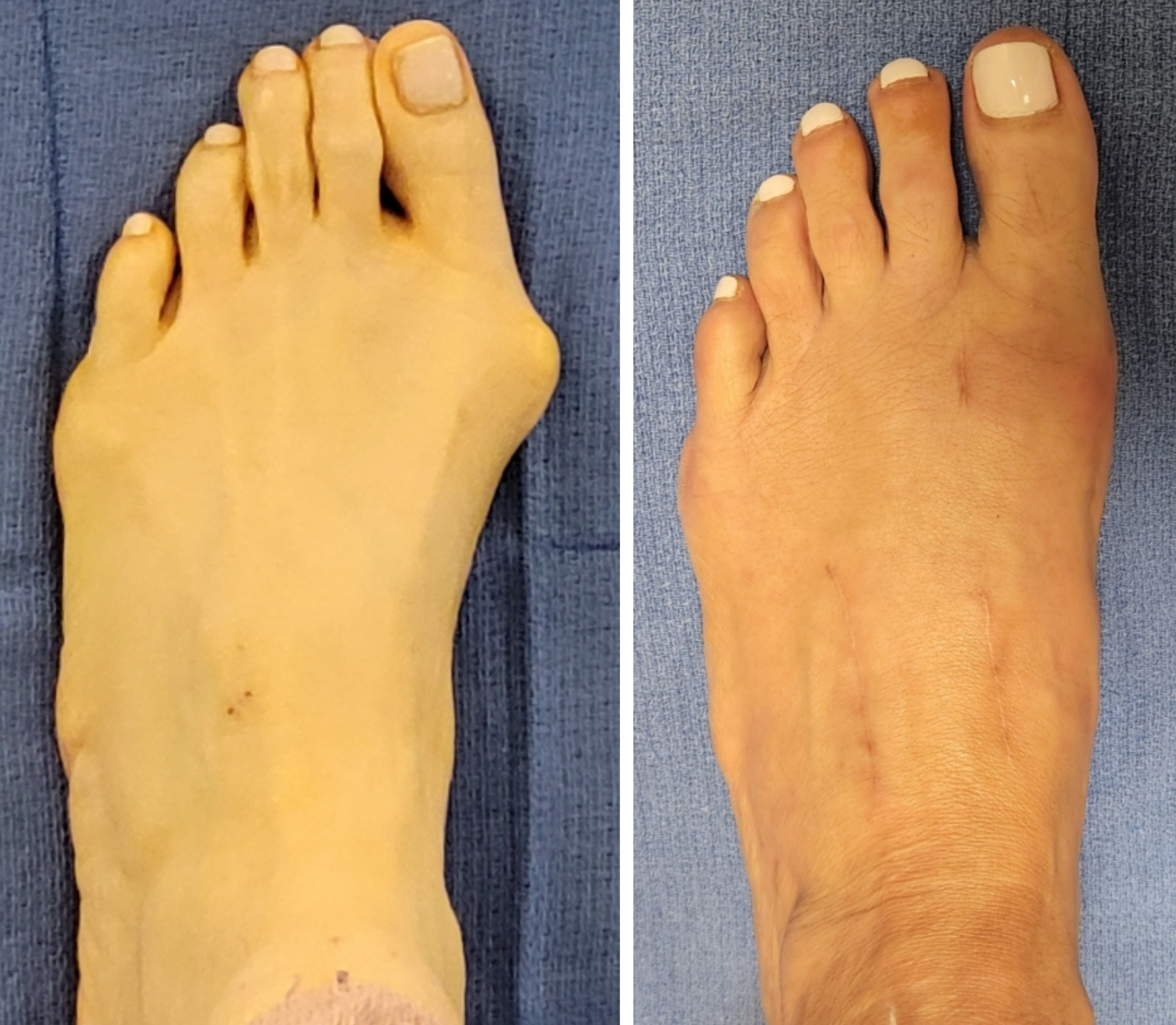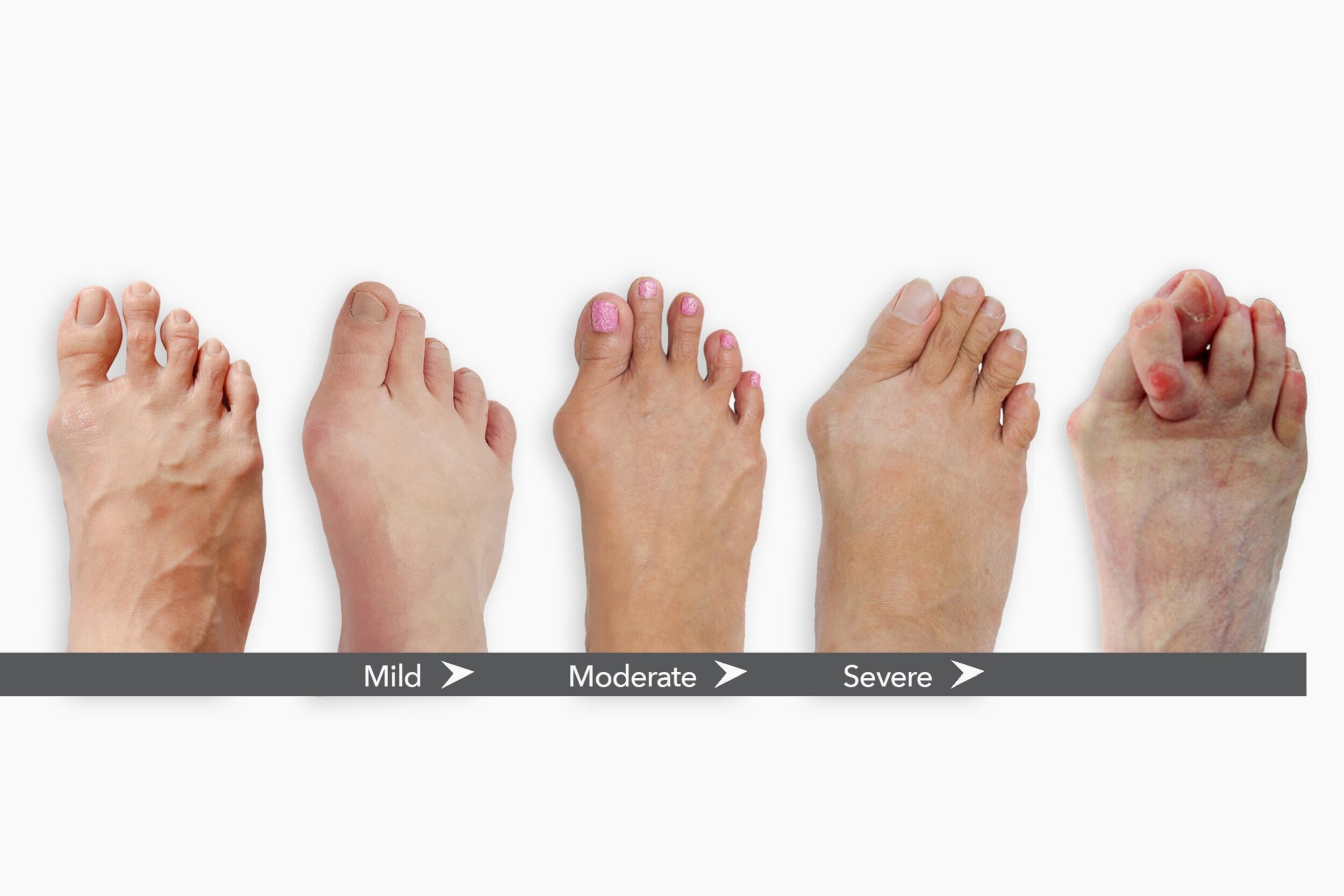
Dr. Steinke Fixes Bunion Pain!
#1 Lapiplasty®
Bunion Surgeon in Texas*
817-416-6155
Foot & Ankle Associates of North Texas, LLPBunions and the Lapiplasty® Procedure
What is a bunion?
A bunion, or Hallux Valgus, is a bump that appears at the middle of the great toe, but it is the result of an unstable joint in the middle of the foot. This unstable joint, called the first tarsometatarsal joint, or TMT, causes the metatarsal bone to deviate toward the midline of the body creating the painful bump. This forces the great toe to move toward the lesser toes.
Modern-day surgery for bunions
Bunions are not simply a growth of bone that can be removed to cure the condition. Traditionally, surgeons just shaved off the bump to provide extra relief in tight shoes. As technology and skills advanced, surgeons progressed to cutting the metatarsal near the great toe joint and moving the bone over to straighten the great toe. This cutting of bone is called an osteotomy. This technique is how most bunions are corrected today.
This traditional procedure does not address the unstable foundation that caused the bunion to form. It also does not address the rotation that is part of the majority of bunions and therefore does not restore normal function of the joint. Studies report a 12x increased risk of recurrence of the bunion compared to Lapiplasty® 3D correction.
*Kim Y, et. al Foot Ankle Int. 2015; 36:944-52. **Okuda R, Kinoshita M, Yasuda T, et al. JBJS. 2007. 89:2163-72. ^Jeuken RM, et al. Foot Ankle Int. 2016. 37:687-95.
Recovery with Lapiplasty ® surgery
The surgery is performed in a hospital or surgery center under general anesthesia and can be completed by a Lapiplasty® trained surgeon in approximately one hour. Patients go home the same day of surgery in a walking boot and stay off their foot for three days. They use a scooter or roll-about, on which they kneel for three days and continue to use for long distances for up to four to six weeks after surgery, as it makes movement much easier than traditional crutches.
Immediately, flatfooted weight-bearing is allowed in a walking boot for transferring and very short distances.
In the vast majoirty of procedures a cosmetic surgical approach is used, and no suture/stitch removal is needed at the two week follow-up appointment. Patients can begin applying more pressure to the foot, so that by four-weeks post-op they can walk in a boot without the assistance of a walker or crutches. By six weeks after surgery, patients transition to athletic shoes.
Aggressive athletic activity, like running, can begin about three months post-op, but low impact exercise is allowed once out of a walking boot.
Am I a surgical candidate for Lapiplasty ®?
Any patient who suffers with pain from a bunion, inability to wear shoes comfortably or limitation to activity that affects their quality of life is a candidate. This procedure is also approved for children who suffer from bunion pain.
The choice is clear – don’t settle for the procedure your grandmother had for her bunions, the future of bunion surgery is here, and it is called Lapiplasty® 3D bunion correction!
Dr. Paul Steinke is one of only 12 Physicians in the nation who have achieved Elite Status for bunion correction as designated by Treace Medical, the manufacturer of the Lapiplasty® Bunion Correction System. We hope to see you soon!












